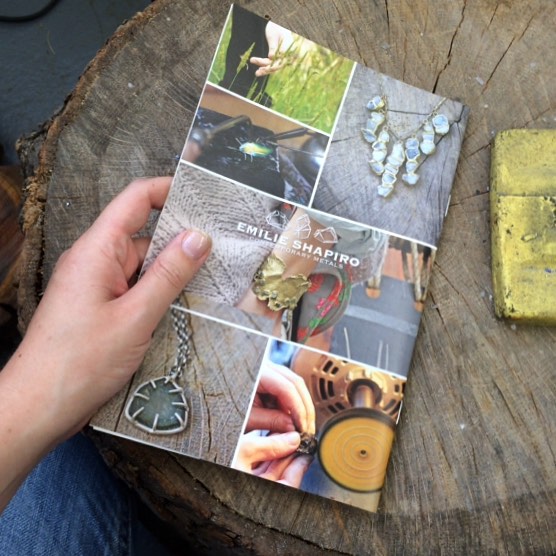*Editor’s note: Whether you’re just starting out or have been running your small business for a while now, you’re probably no stranger to the unexpected challenges that tend to pop up from time to time. Designer, entrepreneur, and author of the book How to Create Your Own Jewelry Line, Emilie Shapiro, shares her advice for working through a few of the trickier things about running a creative business.
Business is the Keyword in Jewelry Business
A business without a goal is just a hobby. Owning a jewelry business is much more than making pretty things. The biggest difference between running a business and engaging in a hobby is the goal; you’re running a business to make money. More and more people are pursuing the life of entrepreneurship and becoming their own bosses. Being a designer and a creator is an amazing gift, but when you decide to become a business owner, your main goal is to make money.
There are a lot of difficult decisions and many hats that you have to wear every day, especially if you are a one woman shop. Accounting, sales, customer service, production management, shipping & handling – all things that are part of running a small business. Running a business is not for everyone. It requires a lot of persistence and ambition. As a craft business owner, you are focusing on efficiency over creativity. Making jewelry is just one small part of running a jewelry business.
As an artist, there is a tendency to make decisions based on feelings and intuition. As a successful businessperson, it is necessary to make decisions based on rational calculation. I like to strike a happy medium between the two.
Create Good Habits
Time management has been one of the most difficult challenges I’ve faced as a designer and business owner. The artist in me has the desire to create when I’m inspired; yet the business owner in me must stick to a strict schedule, otherwise I will fall behind. At the end of the calendar year, I sit down and map out my entire year including design and production for new samples, photography, marketing, and trade shows to make sure that I don’t miss deadlines.
Develop a clear system on how you take an order, how you produce an order, and how you ship an order. Although you may not have many orders at the beginning, set your business up to grow. Adopt good habits and learn about all aspects of the jewelry industry (or your own chosen industry).

How to Create Your Own Jewelry Line by Emilie Shapiro
You’re the Boss
You’re the boss, but it’s okay to ask for help. When you need it, ask for it. Use the resources of family, friends, and local businesses around you. No one can do everything!
I have to constantly remind myself it’s okay to say no. When I first started my business, I would say yes to everything – whether it was a custom design from a retail client or a store trying to make changes to my work just to get a sale. So many of those projects were so time consuming and resulted in me losing money.
Whether you’re hiring an employee, deciding if a new store is a good (or a bad) fit for your work, or telling the owner of a store they can’t change your designs, you’ll make scads of big decisions when you’re running a craft business. You’re the designer and the boss.
Be Thoroughly Professional
Like most industries, the jewelry and fashion industries are dominated by men. As a young female (I started my business at 22) I have always struggled for people to take me seriously. I always act professional, ask questions, and look people in the eyes – I find that if I project onto someone else how I want to be treated in business, it will be returned.
Accept nothing less than the highest standards for your work. Never cut corners to make a deadline; your work will suffer and people will notice. Customers buy handmade because these are good-quality products. The goodwill of your customers is your most valuable asset! Don’t jeopardize it by delivering late or shipping work that’s not top quality.
Emilie discussing the pros and cons of trade shows. See more videos here.
Listen to Your Audience
Concentrate on building relationships with people, not closing a sale. Many of my wholesale and retail clients have turned into lifelong friends. It’s not just about making the sale, rather building a relationship to see what works for each party. Listen to the feedback from clients and let it guide you in your business. Observe what styles work, what they want to see more of and where you can expand.
When I first created my jewelry line I had a very clear vision of who I thought my clients would be. As I began to sell my work, I was so taken aback that my ideal client didn’t look just like me. I set out to sell at hipster boutiques, but I was very surprised when galleries and museums began to carry my work. Clients were more interested in the process and inspiration behind my work than any trend I was trying to achieve. I re-branded and shifted my focus to celebrate my work as good quality, handmade artisan pieces.
There is always more to learn about this business. Continue to experiment with your craft by taking classes, attending trade shows, and researching what others in the industry are up to. Trust me, it’s worth it!


No Comments